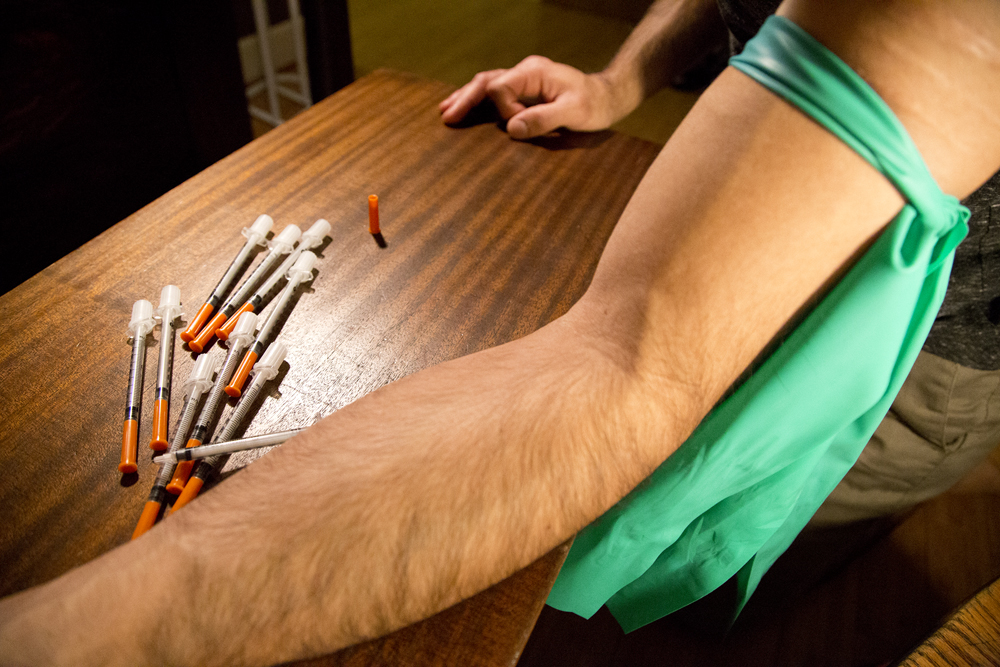During the first month of spring quarter, two severe instances of heroin use by students on campus occurred in the Joseph C. Blumel residence hall, and reflect what is said to be a national trend: Use of heroin is on the rise.
According to September 2013 survey results from the U.S. Department of Health and Human Services, the number of past year heroin users in the U.S. grew from 373,000 in 2007 to 669,000 in 2012. Past year users are those who had used heroin in the 12 months before their participation in the survey.
Phil Zerzan, chief of Portland State’s Campus Public Safety Office, said this activity is a cause for concern on college campuses across the country.
“We’re experiencing here, as in other universities across the U.S., an increase in heroin use in students, and in some instances it is finding its way into the residence halls,” he said.
In 2012 there were five student-related heroin incidents on campus. There were seven in 2013. Two on-campus incidents from April of this year illustrate the effects of these increases.
On April 4, after receiving a report from a student mother who was concerned about a suspicious man yelling at her child, CPSO responded to a second report that the same man was seen in Blumel on the seventh floor.
The man, Eric Christian Nunez, was not a PSU student. He had a dangerous drugs warrant and was lodged at the Multnomah County Detention Center.
Officer Chris Fischer and Sergeant Robert McLeary, both from CPSO, later returned to the dorm room where Nunez had been found. Throughout the room they discovered syringe caps, metal cookers, blood-soaked paper towels and napkins, and small clear plastic baggies that appeared to contain narcotic contraband.
In a separate incident on April 18, CPSO officers again responded to Blumel, this time hearing on the radio that the Portland Police Bureau was dispatching three officers there for a heroin overdose. When they arrived, the room’s student resident was performing chest compressions on Ryan Ellis Kelly, whose face and fingers had turned blue from lack of oxygen. Kelly is not a PSU student.
Sergeant McLeary then took over the chest compressions until fire and medic crews arrived.
According to CPSO’s public information board, the medics had to inject Kelly a total of six times with Naloxone—a narcotic drug used to reverse the effects of heroin and other drugs—and performed an endotracheal intubation to open his airway. Kelly was listed in stable condition at a local hospital later that night.
The student resident, who was living in the dorm with her four-year-old son, told CPSO that Kelly was an acquaintance of hers, and that while she was a recovering heroin user who had relapsed six days prior to this incident, she didn’t know Kelly was using her bathroom to shoot up.
A growing trend
In an Inside Higher Ed article called “Heroin on Campus,” writer Cory Weinburg addressed the increase of student heroin use following the death of a 19-year-old University of Rochester student, Juliette Richard, which was attributed to a heroin overdose. Richard was found dead in her dorm room in March.
In the article, Weinburg quoted Rochester’s director of health service, Ralph A. Manchester, as pointing out that there isn’t a dialogue about heroin use by college students.
“Frankly, there was not a lot of discussion about hard drug use before [Richard’s death] last month because our surveying data suggested it’s at very low level[s],” he said.
Weinburg also stated that heroin use by college students in particular is a growing trend. “Now, colleges located in cities with new, well-documented heroin scourges are starting to realize they have a lot of catching up to do. In the Rochester region, heroin overdoses increased fivefold in three years.”
PSU’s own numbers, compiled by CPSO, show that in the last two years, on average, 18 percent of drug reports involving heroin, methamphetamine or cocaine were PSU affiliated, meaning they involved people directly involved with the university—like students.
“It does present problems, and there is crime associated with addiction issues,” Zerzan said.
“Heroin addiction is particularly insidious,” he added. “Sometimes arresting a person that’s in a cycle of addiction…can serve as a catalyst for change and make social services and addiction treatment available.”
Why is college heroin use on the rise?
Robert Reff, the substance abuse prevention coordinator at Oregon State University, said in Weinburg’s article that part of the problem in addressing heroin use by college students is that few administrators do just that—address it.
“We don’t think of college students as IV drug users. A lot of people have images of what IV drug users look like, and it’s not college students,” he said.
“When I talk with administrators that heroin is in my community they look shocked at me and think college students don’t use it. But with addiction, it covers race, gender, socioeconomic status.”
Reff went on to say that college students who become addicted to prescription drugs like oxycodone will sometimes turn to heroin, because it’s a similar, cheaper option.
“Colleges struggle to respond to that pattern because most are stretched to their limits responding to alcohol and marijuana issues,” Reff said.
Zerzan has been doing what he can to address the issue of heroin use on campus since becoming CPSO’s chief in 2011.
“When I first got to this campus, I was surprised to see that a significant public safety concern was people not associated with [the] university using the campus restrooms to shoot up heroin,” Zerzan said. “There was an overdose death in one of the restrooms just prior to my arrival at PSU. So we focused on a strategy of access control: reporting, exclusions and arrests to significantly reduce those occurrences.”
These incidents are not just harmful to the addicted.
“Two months ago, one of our officers sustained a needle stick during an arrest, so this issue impacts the health and safety of CPSO’s officers as well,” Zerzan said.
As far as addiction treatment services and rehabilitation geared specifically toward college students, there isn’t enough information out there to really know what works well and what doesn’t, Manchester stated in Weinburg’s article.
“The problem is, there’s not been a great deal of research done on what kinds of programs work for college students who use drugs like heroin,” he said.
The Center for Student Health and Counseling encourages students who are in crisis to come to the facility any time during hours of operation, Monday–Thursday from 8 a.m. to 6 p.m., and Friday from 9 a.m. to 5 p.m., or, if after hours of operation, to contact the Multnomah County Crisis line at 503-988‑4888 or CPSO’s emergency line at 503-725‑4404.






